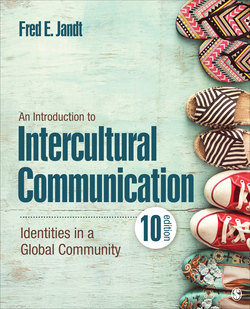Читать книгу An Introduction to Intercultural Communication - Fred E. Jandt - Страница 13
На сайте Литреса книга снята с продажи.
Religion and Identity
ОглавлениеCannadine (2013) argues that religion is the oldest source of human identity. Religion can clearly be a regulator of how we live our lives. Religious identity can affect all elements of our lives. For example, the Hindu writes from left to right, prays to the rising sun, and keeps a mustache. The Muslim writes from right to left, faces the setting sun when praying, and always shaves the upper lip (Jacoby, 2011).
Religion provides a sense of identity and source of conflicts. Religious wars are those clearly caused or justified by differences in religious beliefs exclusive of other issues. Even with that restrictive definition, religious wars have resulted in tens of millions of deaths. The Crusades of the 11th through 13th centuries against the Muslims were blessed as a bellum sacrum (“holy war”) by Pope Urban II. In the 16th century, there was a succession of wars between Roman Catholics and Protestants known as the French Wars of Religion. The Nigerian Civil War (1967–1970) pitted Islam against Christianity, as does ongoing violence in the Central African Republic. In the early 1990s, Serbs, Croats, and Bosniaks in the former Yugoslavia were divided along Orthodox, Catholic, and Muslim lines. In Iraq, Muslims are divided between Sunni and Shiite. India, founded as a secular, pluralist republic, has passed a new citizenship law that critics say marginalizes Muslims. Late in 2019, protests had spread across the country. At other times, of course, religious groups have coexisted without conflict.
In Chapter 8, you’ll read more about religion and identity, but first let’s look in more detail into Cannadine’s remaining five sources of human identity and conflict.
